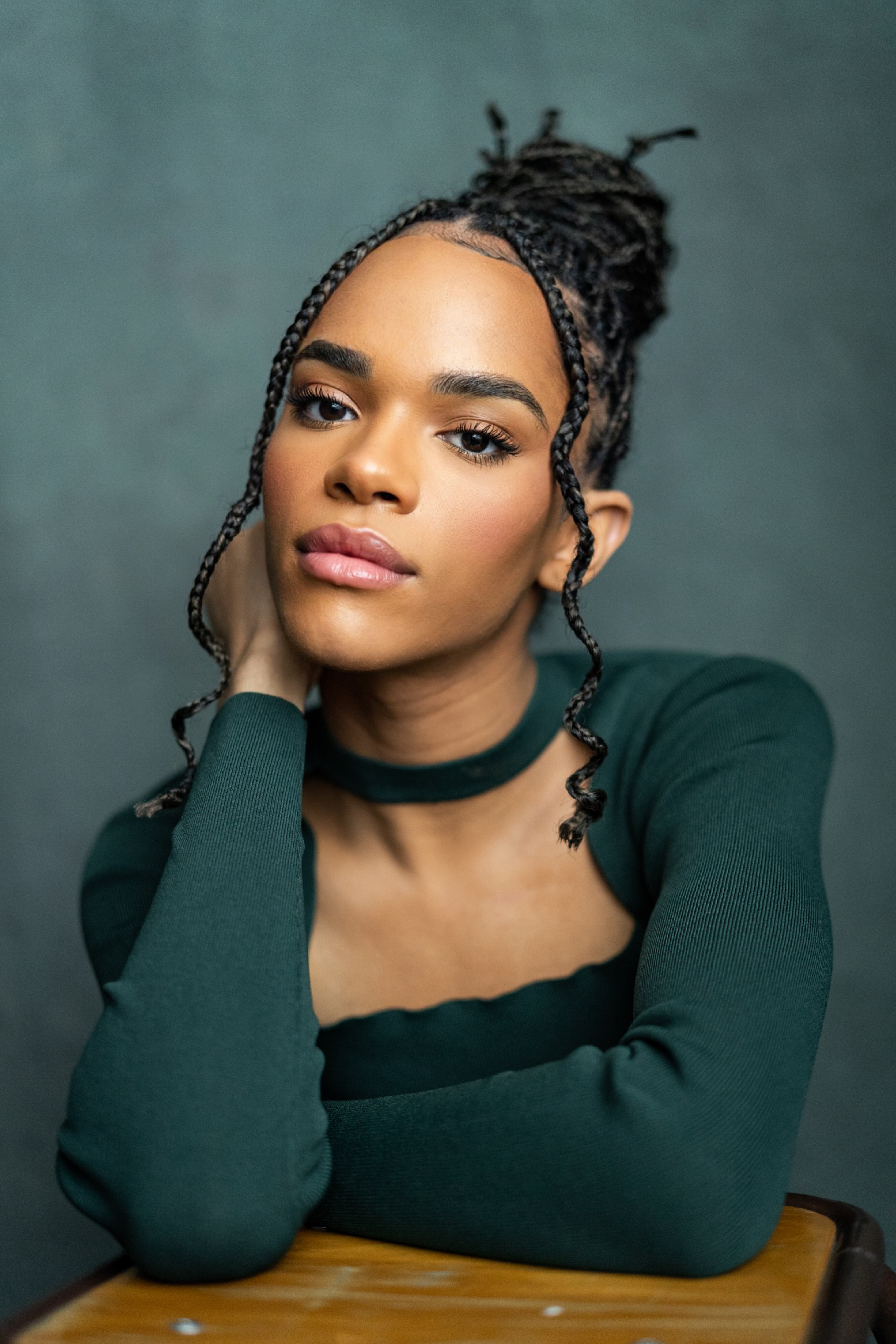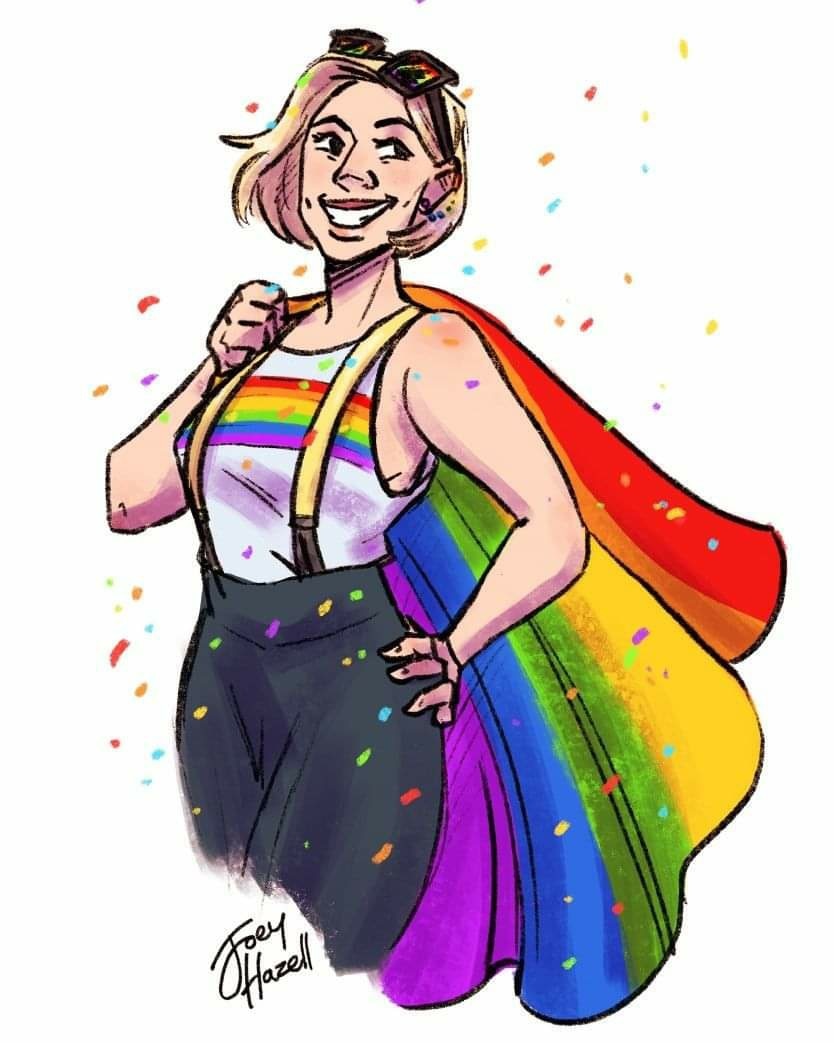June 30, 2023
"You want to know the secrets of existence? Start with the mysteries of the heart."
The TARDIS has always been a welcoming space for all, and Doctor Who takes pride in its exceptionally diverse fanbase. Among these are the numerous LGBTQ+ fans, whose dedication and creativity contribute significantly to the fanbase centred around everyone's favourite time traveller.
As Pride month concludes and celebrations continue globally, it's fitting to highlight some of the ways Doctor Who has embraced the LGBT+ community.
But first, some history.
Early beginnings
When Doctor Who was first aired in 1963, male homosexuality was still illegal. The UK's legislation only changed in 1967 – a full four years after Doctor Who's inception – but persecution still persisted. Considering the Doctor hails from an advanced society with a nuanced understanding of identity, one can't help but wonder about the Doctor's perspective on these issues.
Unsurprisingly, LGBTQ+ stories and characters were not well-represented on television during this time. That is not to say, however, that there weren't any LGBTQ+ individuals working within the industry, including Doctor Who’s first director, Waris Hussein.
In an interview for the Doctor Who YouTube Channel, Waris suggested that the leather-clad Tegana – the villain in classic Doctor Who story, Marco Polo – was the closest he could get to depicting a gay fantasy figure on screen.
Doctor Who has always had moments of camp, but after producer John Nathan-Turner took the reigns in 1980, it was turned up a notch. With his proclivity for stunt casting, (Ken Dodd as the Tollmaster in Delta and the Bannermen and Sheila Hancock as Helen A in The Happiness Patrol), the introduction of international companions (such as Tegan from Australia and Peri from the USA) and a strong 80s aesthetic, Nathan-Turner's take on the show broadened its appeal and added a strong sense of flair.
The Sixth Doctor’s technicolour coat was emblematic of this new era, but it was during Sylvester McCoy's tenure as the Seventh Doctor that LGBTQ+ themes were weaved into the show's DNA. The Happiness Patrol can be considered a response to Section 28, a 1988 legislation that prohibited the education or promotion on homosexuality in the UK. The story depicts a totalitarian state which mandates happiness at the expense of personal autonomy. Ace’s character could also be interpreted as questioning her sexuality, a notable example being in Survival with her relationship with Karra.
A Brave New World
Two years after Section 28 was repealed in 2003, Doctor Who burst back onto our screens with Russell T Davies at the helm. The man who’d brought us Queer as Folk and Bob & Rose certainly didn’t shy away from LGBTQ+ issues. The Ninth Doctor’s line, “That won’t last – he’s gay and she’s an alien,” in Series One’s debut episode Rose was the first time in the show’s history that the g-word was used in this context. The first season also saw the introduction of Captain Jack Harkness, a pansexual time agent from the 51st century, who showed an equal attraction to men and women, human or otherwise. Doctor Who was back, and it had a fresh outlook on the universe in more ways than ever before. As the Ninth Doctor would say, “Fantastic!”
From its relaunch, the show has represented differing sexualities as an ordinary concept rather than something that needs to be highlighted. No one remarked when Cassandra said she'd been a little boy growing up in The End of the World, when Sky Silvestry mentioned her female ex-partner in Midnight, or when the Doctor set up Jack and Alonso in The End of Time. Sexuality doesn't need an explanation within the world of Doctor Who. Characters are accepted for who they are and are challenged based on their choices and actions.
Steven Moffat’s time in charge saw the introduction of Silurian sleuth Madame Vastra and her human wife, Jenny; capable women who were among the Doctor’s closest advisers. There was also River Song, whose spouses had included both men and women, and Clara Oswald, who apparently had first-hand experience with Jane Austen’s kissing abilities. Bill Potts was the first openly lesbian member of the TARDIS team, and Sleep No More featured Doctor Who’s first openly trans performer, Bethany Black.
Chris Chibnall’s run continued to depict LGBTQ+ characters in the Doctor Who universe, with Angstrom, Frankie and Richard, and brought a same-sex relationship into the spotlight in Praxeus with Adam and Jake. The Thirteenth Doctor's companion Yasmin Khan began to develop romantic feelings for the Doctor, which were confirmed in Eve of the Daleks. In Legend of the Sea Devils, the Doctor was shown to reciprocate these feelings, while admitting she couldn’t fix herself to anyone. This was the first time that the Doctor had explicitly expressed a same-sex attraction onscreen.
With Russell T Davies returning as showrunner for Doctor Who’s 60th anniversary, it can only be assumed that the LGBTQ+ community will continue to be represented in the show. Not only are Neil Patrick Harris and Yasmin Finney appearing in this year's milestone specials, but drag superstar Jinkx Monsoon has also been cast in an as-yet undisclosed role. They will be accompanied by a whole host of LGBTQ+ talent ready to take the world by storm!

Here are some of the ways in which LGBTQ+ fans have expressed their love of Doctor Who.
Performers
Many LGBTQ+ performers have taken Doctor Who as an important influence on their work, and showcased their love of the show in their marvellous performances. Look no further than RuPaul’s Drag Race UK talents Lawrence Chaney and Tia Kofi!
Conventions
Doctor Who conventions, such as the long-running Gallifrey One, have long offered a space for LGBTQ+ Doctor Who fans to meet and celebrate their favourite show together. 2023’s iteration of the convention included a panel by Ivy Hanover and Rebecca McGlynn entitled “Why Queer Representation Matters in Doctor Who”, and featured Doctor Who universe writers Lizbeth Myles and Joseph Lidster. The convention has also proudly featured LGBTQIA+ socials and meet-ups, giving fans a safe space to express themselves freely.
Books
There’s so much writing on the crossover between the LGBTQ+ community and Doctor Who. Novelisations are just one way in which Doctor Who has been able to explore LGBTQ+ themes in more detail. In his 2020 novelisation Rose, Russell T Davies embellished the story of the Doctor's companion, introducing more of her friends from Powell Estate. Among these were the band No Hot Ashes, who included Sally Salter, a young trans woman.
Fan Art
There’s no stopping the creativity of Doctor Who fans! Below you can check out some artwork by talented members of the community depicting LGBTQ+ themes and characters within the show.










